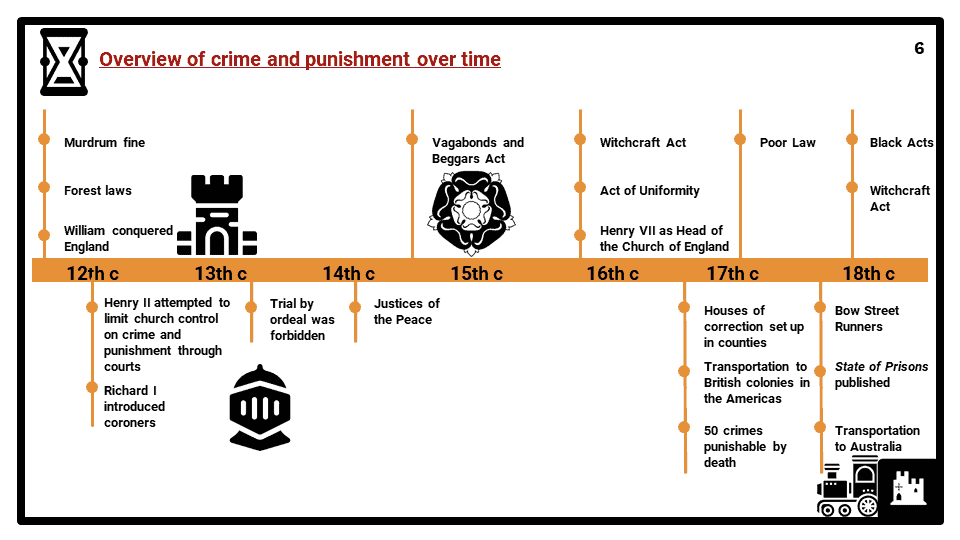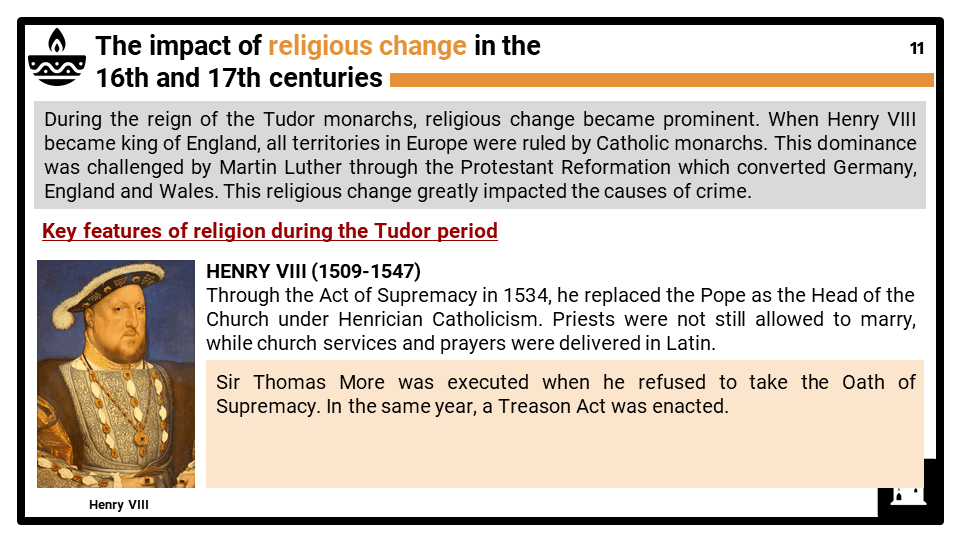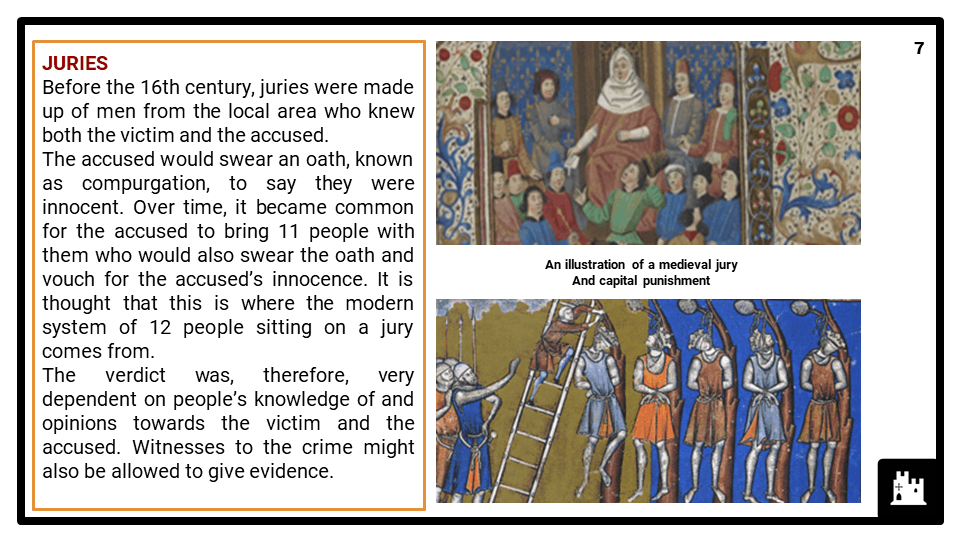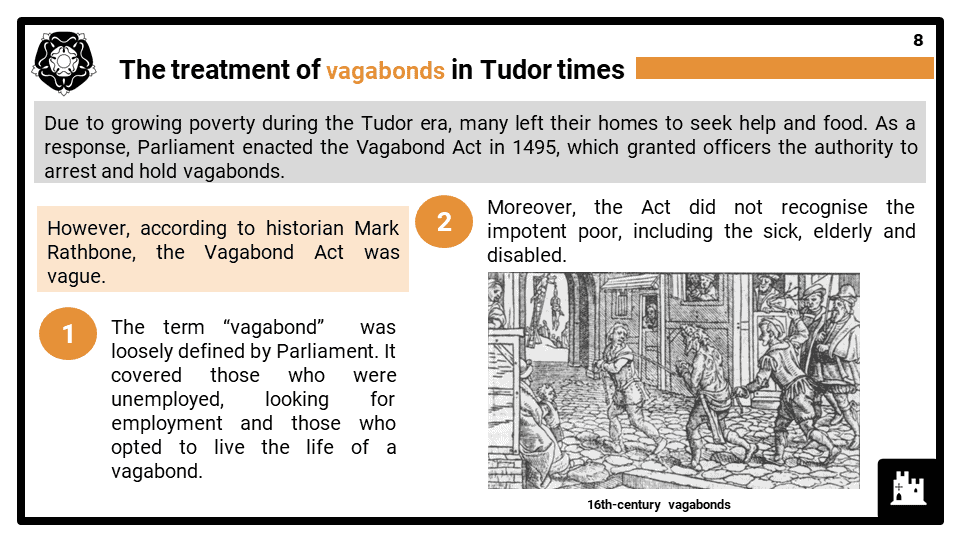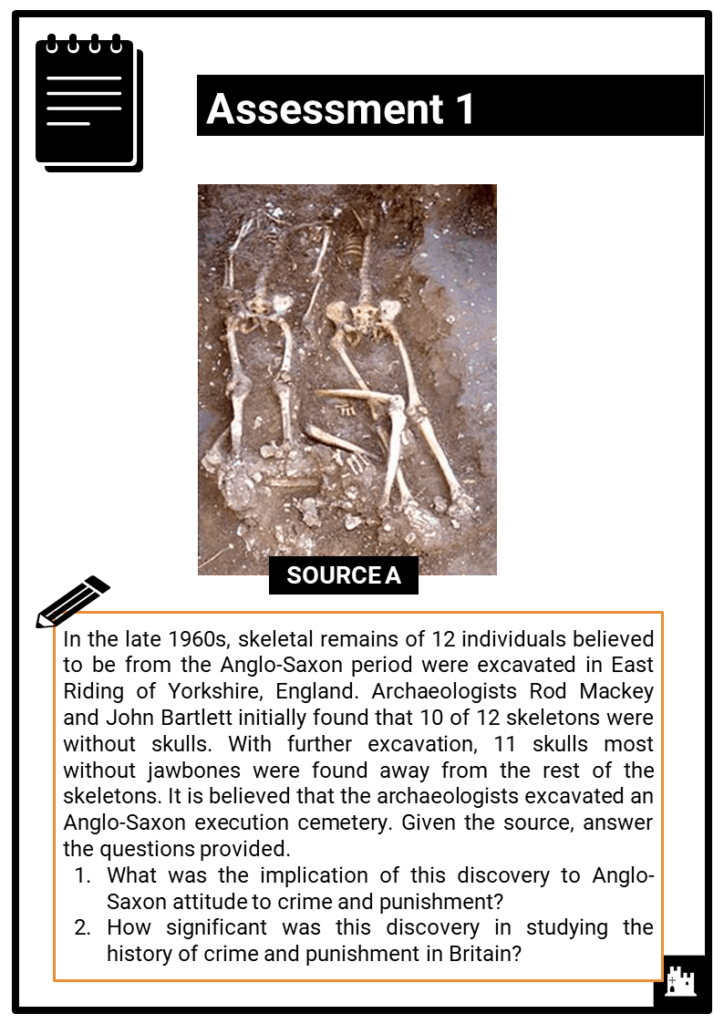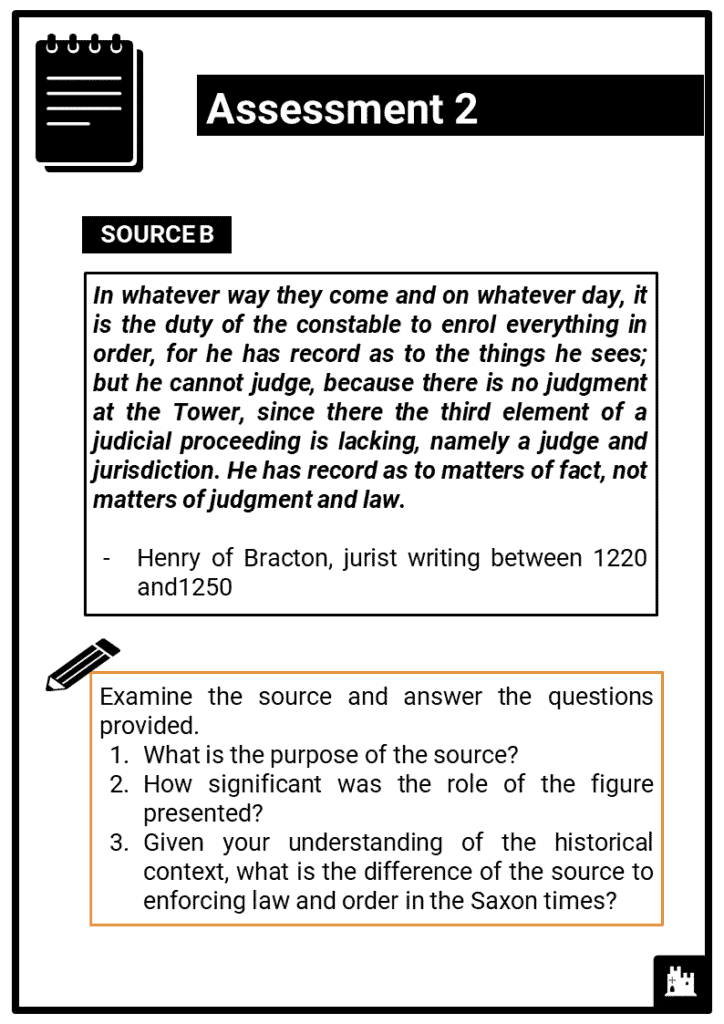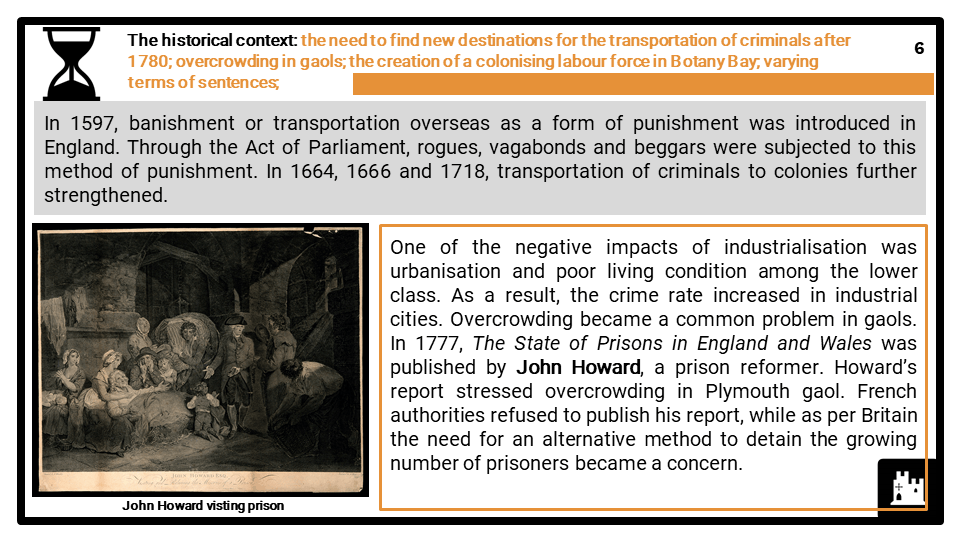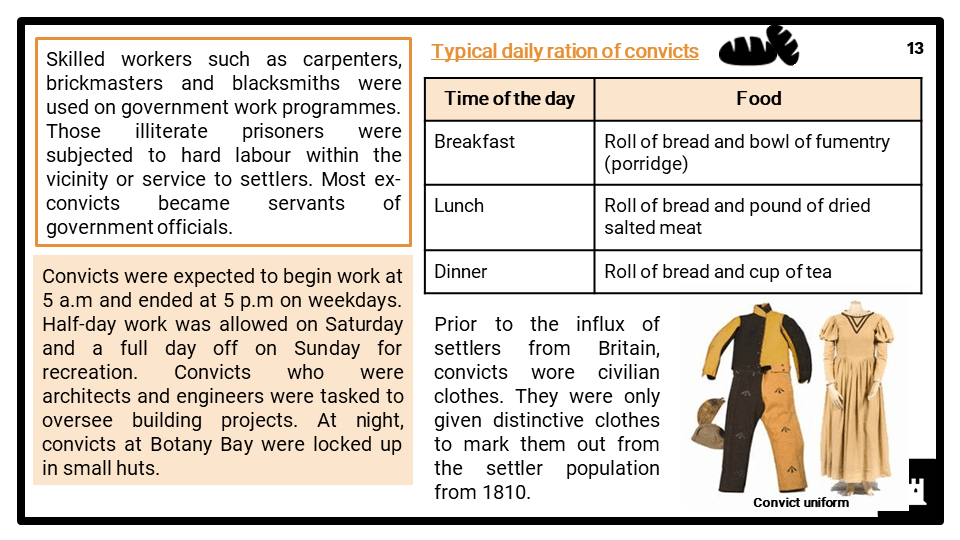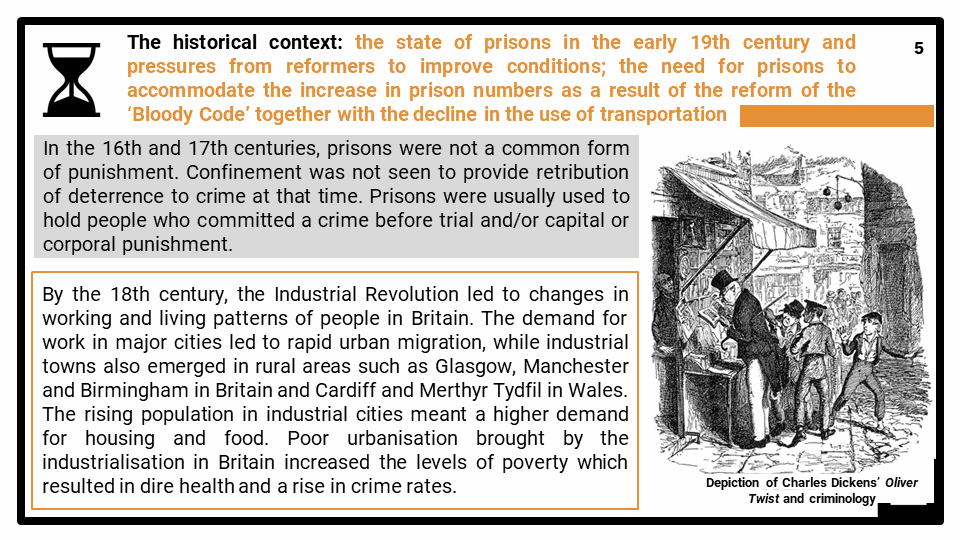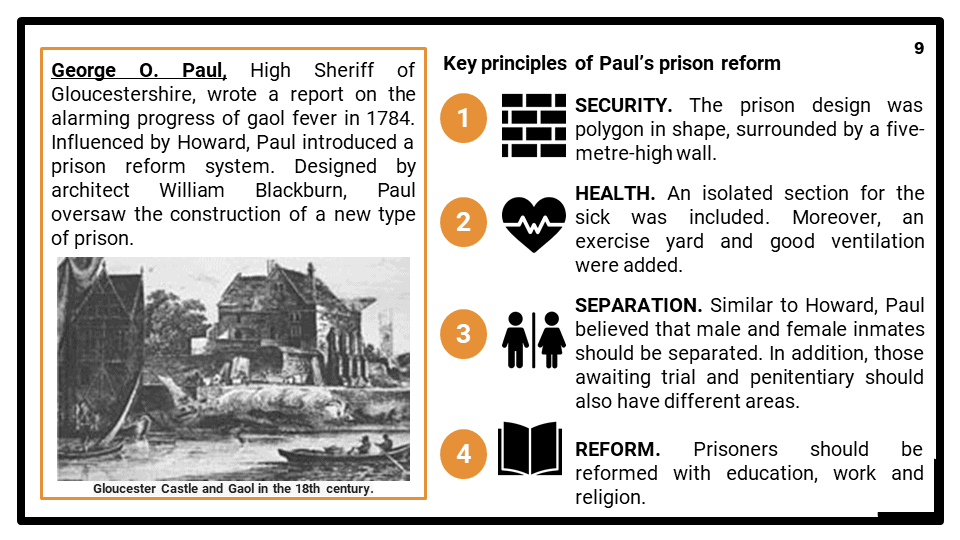Teach any Eduqas module 2E: Changes in Crime and Punishment in Britain, c.500 to the present day, no prep needed!
Do you want to save dozens of hours in time? Get your evenings and weekends back? Be fully prepared to teach any Eduqas GCSE topic 2E?
Every Eduqas topic 2E is covered, and each module comes complete with:
Eduqas GCSE History Component 2: Thematic Studies
Written examinations: 2 hours (comprising two papers of 1-hour duration each)
50% of qualification 100 marks (plus 6 marks for spelling, punctuation and grammar and use of specialist terms)
In Component 2: Studies in Breadth, learners study one Period Study and one Thematic Study, from eight options in total. This component focuses study on substantial and coherent medium and long timescales. Studies in Breadth will provide learners with the opportunity to study history over longer timescales and consequently understand the changing nature of developments and issues associated with particular periods and geographical contexts. Studies in Breadth will also allow learners to understand change and continuity and similarity and difference across long sweeps of history, as well as the most significant characteristics of different ages. Studies in Breadth will focus study on different historical eras and different geographical contexts. This component encourages learners to develop an understanding of second-order historical concepts in particular, including continuity, change, cause, consequence, significance and similarity and difference.
Component 2: Studies in Breadth
Sub-section: Thematic Studies
Module: 2E Changes in Crime and Punishment in Britain, c.500 to the present day
This option focuses thematically on the main trends in the history of crime and punishment in Britain from c.500 to the present day. Candidates will be required to consider the causes and types of crime, law enforcement, combating and punishment of crime and changing attitudes towards crime and punishment over time. Candidates will also be required to examine the major political, social, economic and cultural perspectives which have contributed to the development of both crime and punishment from c.500 to the present day. In this option, centres should ensure that they focus, where appropriate, on the issues of change, continuity, significance and turning points. As part of this option candidates will investigate a historic site connected with this theme. The required content in italics shows which key features and characteristics of the period must be studied.
Key Questions and Required Content
- Causes of crime (What have been the main causes of crime over time?)
- Problems in the medieval era: poverty, famine and warfare; the growth of economic pressures in the sixteenth century; the impact of religious change in the sixteenth and seventeenth centuries; the pressures of industrialisation and urbanisation in the eighteenth and nineteenth centuries; twentieth-century pressures: changing technology, trend towards violent crime and anti-social behaviour.
- Nature of crimes (How has the nature of criminal activity differed and changed over time?)
- Common crimes in the medieval era; vagrancy, heresy and treason in the sixteenth and seventeenth centuries; the growth of smuggling and highway robbery in the eighteenth century; crimes connected with urbanisation in the nineteenth century; industrial and agrarian disorder during the Industrial Revolution; the growth of crimes in the twentieth and twenty-first centuries associated with the development of the motor car, computers, hooliganism and terrorism
- Enforcing law and order (How has the responsibility of enforcing law and order changed over time?)
- Communal and family responsibility in Saxon and medieval times; the role of manorial, church and royal courts in the later medieval period; the growth of civic and parish responsibilities in the sixteenth century; the concept of state police forces in the nineteenth century; the changing nature of policing in the twentieth and twenty-first centuries.
- Methods of combating crime (How effective have methods of combating crime been over time?)
- Communal methods of combatting crime in Saxon and medieval times; the role and effectiveness of Tudor Justices of the Peace (JPs) and other parish officers; the establishment and influence of the Bow St. Runners; Peel and the setting up of the Metropolitan Police in 1829; the extension of police forces in the nineteenth century; developments in policing in the twentieth century: transport and communication, specialisation and community policing.
- Methods of punishment (How have methods of punishment changed over time?)
- The harsh nature of punishment in Saxon and medieval times; the treatment of vagabonds in Tudor times; the use of public punishment up to the nineteenth century: stocks, pillory and executions; the use of transportation from the 1770s to the 1860s; the need for prison reform: Howard, Paul and Fry; new prisons in the later nineteenth century: the silent and separate systems; alternative methods of dealing with prisoners in the twentieth century: borstals, open prisons, probation and parole, community service.
- Attitudes to crime and punishment (Why have attitudes to crime and punishment changed over time?)
- The concepts of retribution and deterrence as purposes of punishment over time; the purpose of punishment in public over time, from humiliation to public execution; the concept of banishment in the eighteenth and nineteenth centuries; the use of prisons to punish and reform in the nineteenth century; changes in attitudes to punishment in the twentieth century: dealing with young offenders, the abolition of the death sentence; attempts to rehabilitate and make restitution.
Historic Environment
- The historical context of the site
- The main features of the historic environment
- The significance of the site in terms of crime and punishment.

